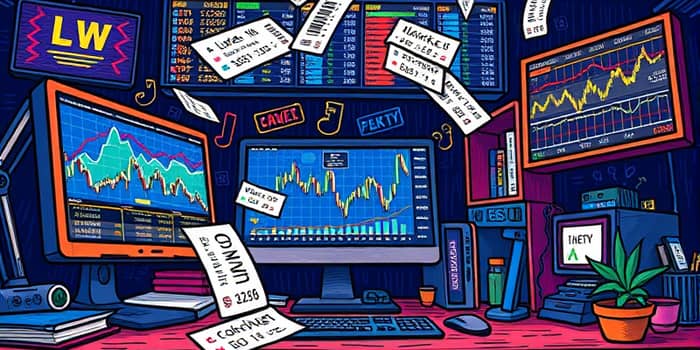In the fast-paced world of financial markets, choosing the right order type can spell the difference between a successful trade and a costly mistake. This detailed guide breaks down everything you need to know about market orders and limit orders, equipping you with the knowledge to make informed decisions.
Whether you’re a seasoned trader or a retail investor just starting out, understanding these foundational concepts will help you navigate volatility, manage risk, and optimize execution.
Definition of Market Orders
A market order is an instruction to execute a trade at the best available price immediately. When you place a market order to buy, you pay the ask price; to sell, you receive the bid price.
Key attributes of market orders include:
- Immediate execution in most conditions
- No control over the exact execution price
- High susceptibility to slippage in volatile or illiquid markets
Market orders are popular for traders who prioritize speed over precise pricing. However, during rapid price swings, execution may occur at significantly different levels than quoted.
Definition of Limit Orders
A limit order allows investors to specify a maximum or minimum price at which they are willing to trade. For a buy limit order, you set a price ceiling; for a sell limit order, a price floor.
By placing a limit order, you gain:
- Full control over execution price
- Protection against adverse price movements
- Potentially better fills if the market moves favorably
The main trade-off is that your order may not fill if the market never reaches your specified price during the active period.
Key Differences between Market and Limit Orders
Below is a comparison of the most important features to help you choose the right order type for your strategy.
When to Use Each Order Type
Deciding between market and limit orders depends on your priorities and market conditions. Consider the following:
- Market Orders: Ideal for liquid assets with narrow bid-ask spreads when execution speed is paramount.
- Limit Orders: Best when you have a precise target price or seek to avoid slippage in volatile sessions.
- Order Duration: Market orders execute instantly, while limit orders can be set as day orders, GTC, or IOC.
Practical Examples and Scenarios
Examining real-world scenarios can clarify the strengths and weaknesses of each order type.
Market Order Example: A stock quotes $100 bid/$100.05 ask. You place a market buy and get filled at $100.05. During high volatility, you might pay above $100.10.
Limit Order Example: You desire to buy at $99.50. You set a buy limit at $99.50. If the price dips to that level and shares are available, your order fills. Otherwise, it remains open until canceled or expired.
Missed Opportunity: You place a buy limit at $2.54, but the price only drops to $2.60 before rallying. Your order never fills, and you miss the subsequent upside.
Advanced Order Types for Context
While market and limit orders cover most needs, advanced traders may explore:
- Stop Orders: Trigger a market order after a certain price threshold is hit.
- Stop-Limit Orders: Convert to a limit order at the stop price, preventing execution beyond your specification.
- Trailing Stops: Adjust the stop price dynamically to lock in gains or limit losses.
Practical Tips and Common Pitfalls
To harness the full power of market and limit orders, keep these best practices in mind:
- Review your broker’s fee schedule and order handling policies.
- Avoid placing limit orders too far from the current price to reduce non-execution risk.
- Monitor thinly traded securities carefully to prevent unexpected slippage with market orders.
- Use time-in-force settings to manage how long your limit orders remain active.
Common mistakes include confusing limit orders with stop orders and assuming market orders always fill at quoted prices.
Conclusion
Understanding the nuances between market and limit orders empowers you to choose the most suitable execution strategy for your individual goals. Market orders offer speed and simplicity, while limit orders provide price control and risk management. By combining both types wisely and incorporating advanced order variants, you can navigate various market conditions with confidence.
Always consider liquidity, volatility, and your investment horizon when selecting an order type. With practice and discipline, you’ll leverage these tools to enhance performance and protect your capital in the ever-evolving world of trading.
References
- https://www.bankrate.com/investing/limit-order-vs-market-order/
- https://bullishbears.com/limit-order-vs-market-order/
- https://www.finra.org/investors/investing/investment-products/stocks/order-types
- https://investor.vanguard.com/investor-resources-education/online-trading/stock-order-types
- https://help.hatchinvest.nz/en/articles/2539901-what-s-the-difference-between-a-market-order-and-a-limit-order
- https://www.youtube.com/watch?v=Tiyystl8x40
- https://www.nerdwallet.com/article/investing/market-order-vs-limit-order
- https://www.schwab.com/learn/story/3-order-types-market-limit-and-stop-orders










